The Great Barrier Reef is a fascinating bucket list destination for many around the world. Whether it be for a quick snorkel trip or a multi-day scuba tour, there are a variety of ways to explore this massive natural wonder.
From impressive coral reefs to hidden shipwrecks, divers can truly see it all here. But where, and how, are the best places and ways to see the reef? This guide will provide you with all you need to know on how to maximize your trip out to the Great Barrier Reef, as well as detailing my own multi-day adventure at sea.
Great Barrier Reef Interesting Facts
Found off the coast of Queensland, the Great Barrier Reef (GBR for short) is the largest coral reef in the world and one of the 7 natural wonders of the world.
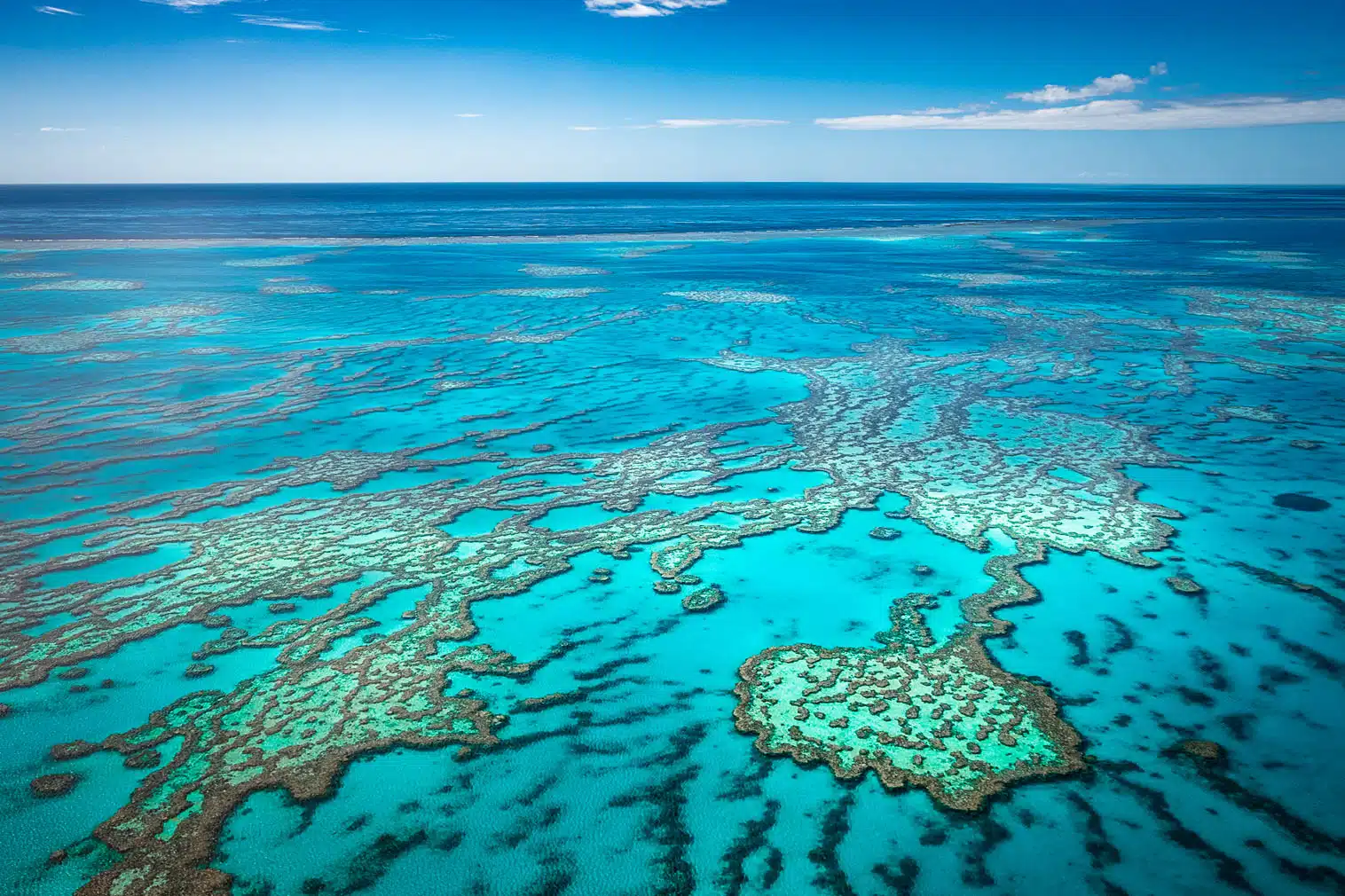
The Great Barrier Reef | I Shafiq/shutterstock.com
Encompassing an area of about 133,000 square miles, this ecosystem is about as large as countries like Japan or Italy! The GBR is composed of several thousand smaller reefs, almost 1,000 islands, and over 1,500 diverse species of marine life. The reef can even be viewed from space.
It’s estimated that over 3 million people visit the GBR every year, making it one of Australia’s largest attractions. However, over tourism, pollution, and climate change have been slowly killing the reef for decades. Due to higher global temperatures, coral bleaching has stripped segments of the reef of its vibrant color and weakened structural integrity.
I spent 2 days out in the GBR where this bleaching was certainly noticeable in areas, yet it fortunately did not detract from my experience. The reef is still insanely beautiful with many segments appearing alive and well. Still, it’s best to take great care in protecting this marvelous ecosystem.
When diving in the GBR, take extreme care to use reef-safe sunscreen, as well as give the coral and marine life necessary distance. Do not swim up and attempt to touch a sea turtle or one of the many species of fish that call the reef home. Also keep an appropriate amount of space between you and the coral. Since coral is a fragile organism, do not touch or kick coral fragments as this can damage them.
Where to See the Great Barrier Reef
The size and extent of the Great Barrier Reef is hard to fathom, with there being an impossibly large number of individual reefs and islands. With this being said, where is the best spot to see and explore this nation-sized ecosystem?
Cairns
This is hands-down the best spot to begin your trip out to the GBR.
Being one of the largest coastal towns with easy access to the reef, you’ll want to use Cairns as your “home base.” You will find the most diversity in trips offered out to the reef than you will from any other town.
There’s an airport on the outskirts of town and a large marina where ships depart daily. Cairns is also one of the only large towns that’s closer to the outer reef, where you can expect to find more diverse marine life.
If looking to extend your stay, you can also spend a day exploring the nearby Daintree Rainforest when you’re back on shore.
Whitsundays
A cluster of picturesque islands right by Airlie Beach, the Whitsundays are a great spot to see some unique coral formations, such as the heart-shaped reef.
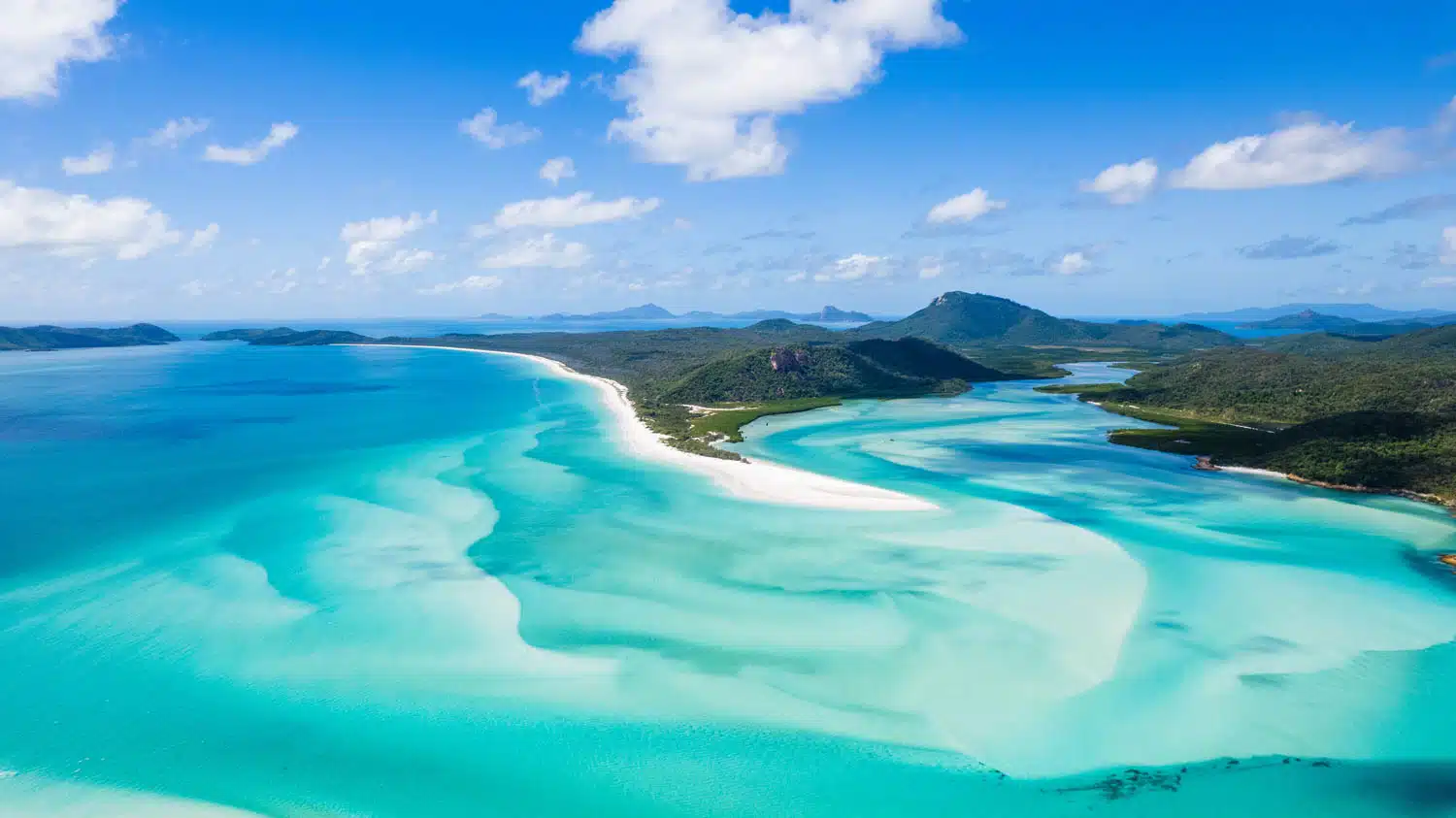
The Whitsundays | T.Visual/shutterstock.com
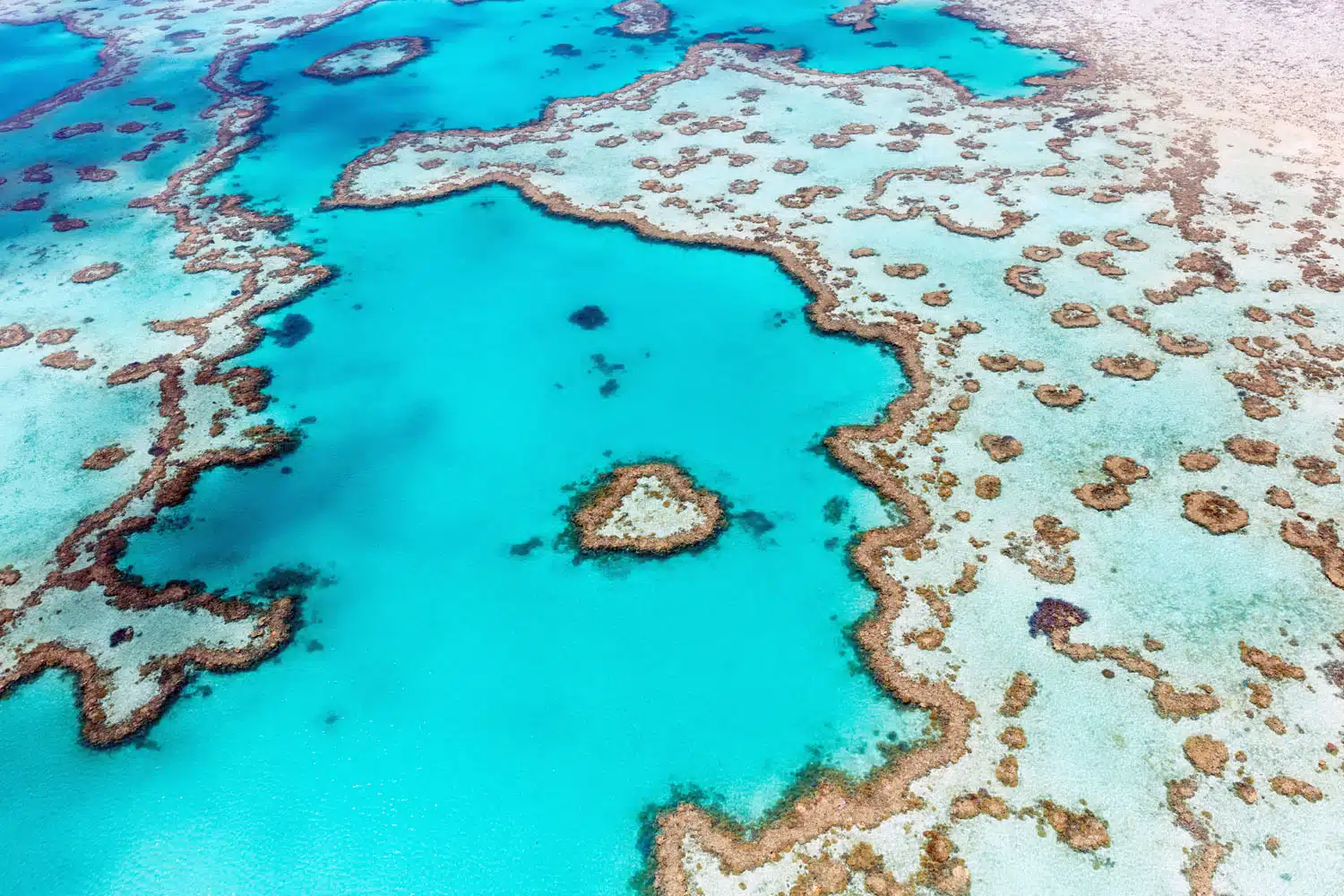
Heart Reef in Hardy Reef | Tanya Puntti/shutterstock.com
At the nearby Hardy Reef, you’ll find a large pontoon parked over a massive collection of colorful coral. The reef is excellent for both snorkeling and scuba and is one of the most popular destinations to visit the Great Barrier Reef along with Cairns.
You can fly into Airlie Beach and from there take a boat out to the Whitsundays.
Town of 1770
This quaint coastal town is popularized by day trips out to Lady Musgrave Island, a small island and reef created entirely from coral. The island is a nesting ground for green turtles in the reef, so if you’re lucky you may swim with a few on your snorkel trip here. We visited Lady Musgrave Island back in 2015, and you can learn about our experience here.
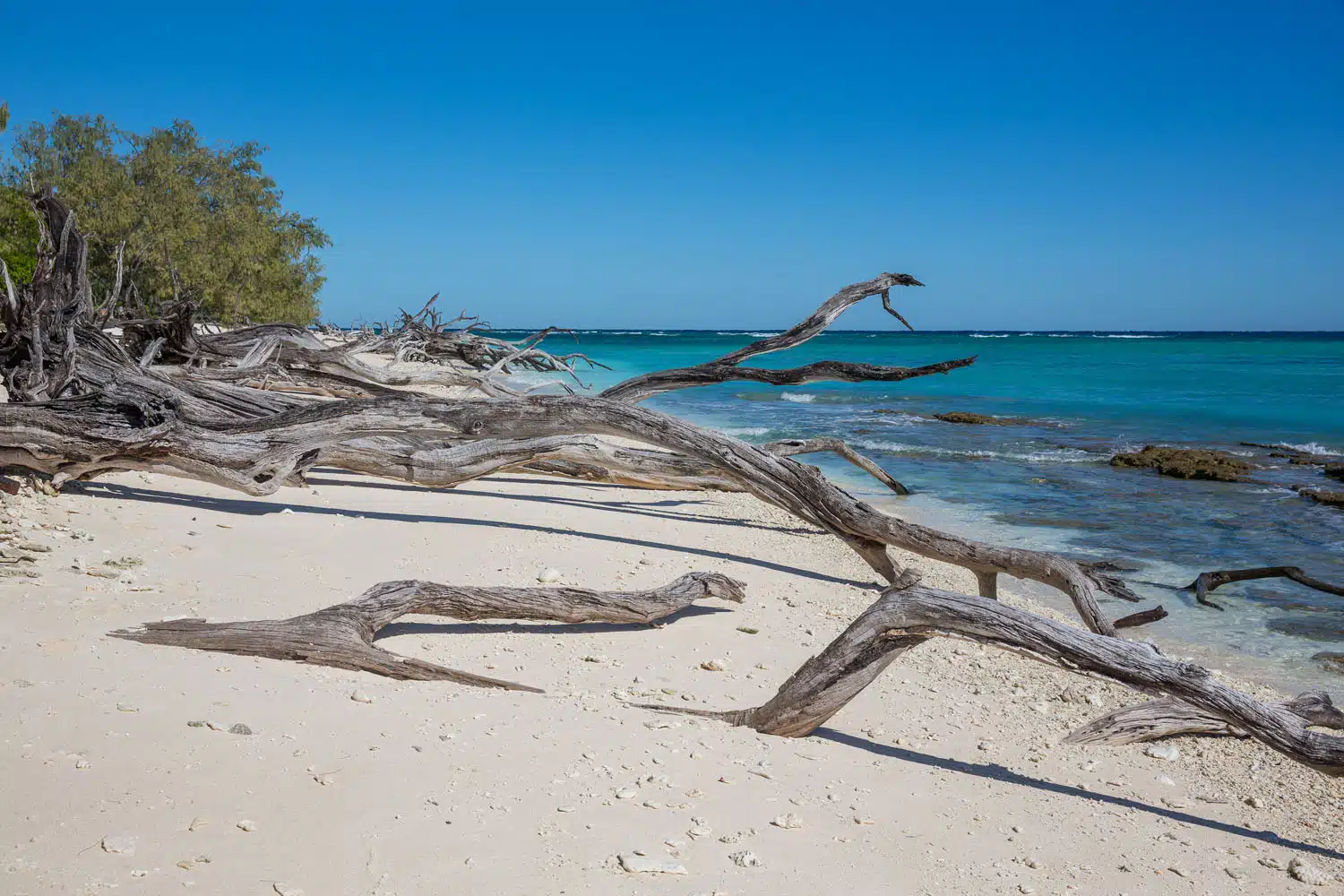
Lady Musgrave Island
Liveaboard Tours – The Best Way to Visit the GBR
Liveaboard tours are multi-day excursions dedicated towards scuba diving. You’ll live on a large catamaran as you bounce between a handful of spectacular dive sites.
With such a great and relaxed way to see the GBR, as well as some of the best sleep of my life, I believe liveaboards are the best method of adventuring into the Great Barrier Reef. But with so many options, which ones are the best?
Note: All companies below provide divers with all essential equipment. I do however recommend double checking in case of an update at the time of booking.
Reef Encounter
We booked a 2 day / 1 night excursion with this company and absolutely loved it. Not only was the boat itself great, featuring numerous amenities such as a jacuzzi, the staff was absolutely fantastic. From serving delicious meals, guiding us through the reef, answering any questions we may have had and even challenging us to a few games of poker, they truly did everything they could to make our trip enjoyable.
Reef Encounter is the perfect company to book with that’s cheaper than competitors while still being just as excellent. They also allow you to complete dives even if you’ve never done so before and aren’t certified. Divemasters will teach you the basics and guide you through the reef, but if you are certified, you’re free to explore the reef in your own group.
To learn more, visit their website.
Spirit of Freedom
This company gets impressive reviews and is one of the highest-rated liveaboard tours. Spirit of Freedom is for those who want a more luxurious experience, so do expect a higher price. They also offer a tour focused on swimming with whales!
They book liveaboard tours for 3, 4, and 7 nights. To learn more, click here.
Ocean Quest
Another midrange company in terms of cost, Ocean Quest seems to be very similar to Reef Encounters. With a nice boat that is slightly smaller than others on this list, you’ll find yourself enjoying numerous highlights such as swimming with sharks at night, whale diving, and even a bioluminescent night swim. Ocean Quest gets fantastic reviews, and I recommend learning more about them here.
Pro Dive
This was the company that I learned to scuba with back in Sydney. I took their 2-day Open Water Diver course and was shocked at how much I learned in such a short period of time, but also how friendly and skilled their staff is.
They have an office located in Cairns, and also operate liveaboard tours out to the GBR. If interested, visit their website.
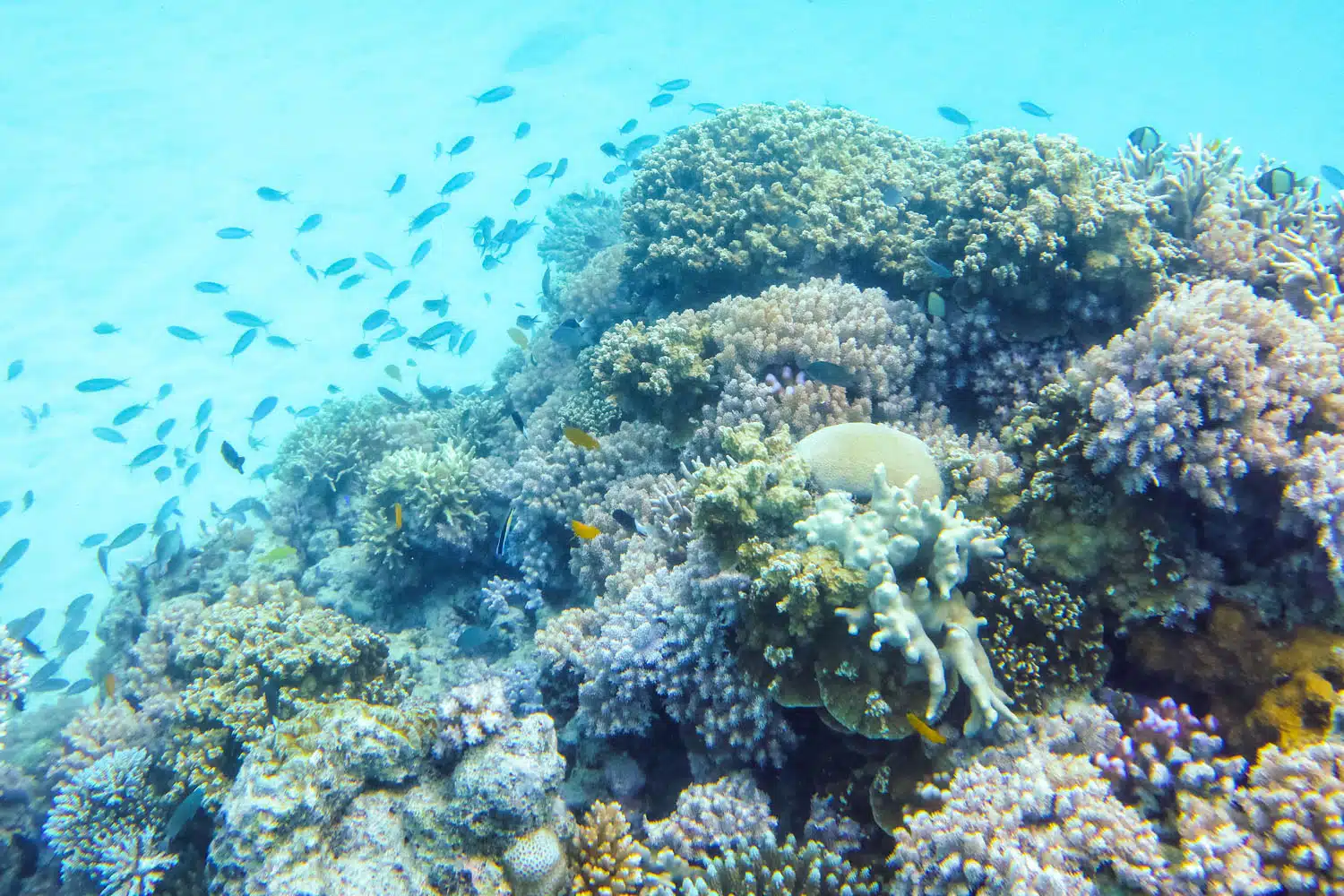
My Experience
I spent 5 nights in Cairns with the highlight of my trip being the 2-day liveaboard tour I booked with a few of my mates. Over 2 days, you sail out to several spectacular dive locations across the Great Barrier Reef, and get to spend your days diving, snorkeling, socializing, eating, and drinking (only drink if you’re done diving for the day!)
I found that a liveaboard scuba tour was a much more relaxed and thorough way to explore the Great Barrier Reef.
Having visited the GBR twice, with my first time being a snorkeling day trip back in 2015, I can say I definitely preferred the scuba trip. Having 2 days on the boat gives you more opportunities to explore the reef as well as more time to enjoy the boat’s commodities. You’re able to experience a greater range of the reef while scuba diving that you can’t get while snorkeling.
Getting to the GBR
On a calm Thursday morning, we checked out of our hostel and made our way to the harbor with our luggage. We boarded a small two-level boat that would transfer us out to the actual liveaboard vessel we would dive from, since this boat was already anchored out by the reef.
Do expect a choppy ride out to the reef. We had a 40-minute ride out in the open ocean, where winds were high and our boat rocked over the swells. The crew handed out seasickness tablets to the passengers while we were debriefed on our itinerary for the next few days. If you are prone to seasickness, take necessary medication BEFORE leaving port as this gives time for the medicine to kick in.
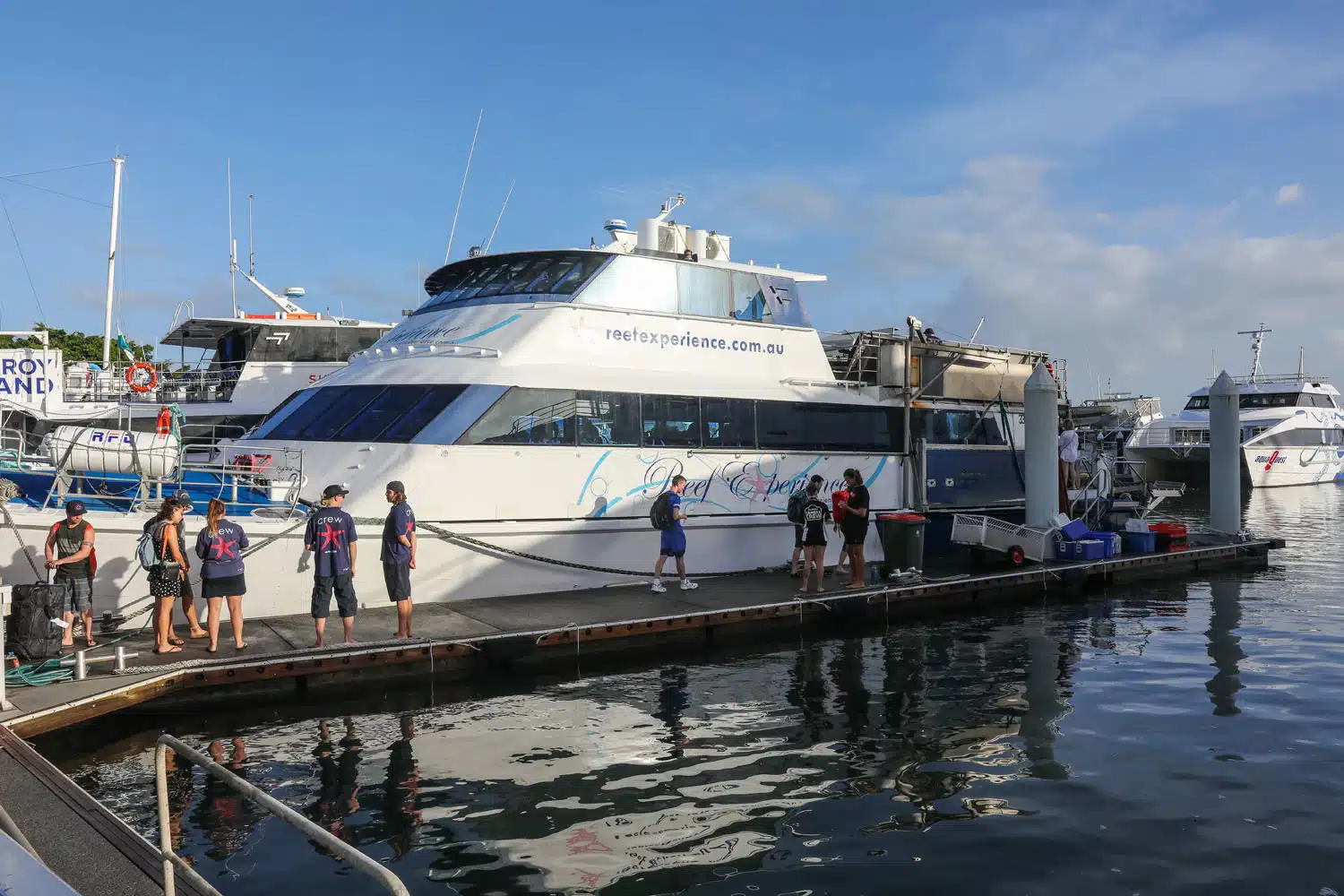
This boat took us from Cairns to the Reef Encounter boat at the Great Barrier Reef.
By midmorning we had officially reached the GBR! Looking out in all directions there was nothing but a calm and vast blue sea. Nearby we could spot the makings of a shallow reef which would be the first of several dive sites today. We transferred our luggage onto our liveaboard boat and settled in for a brief orientation before heading out into the water.
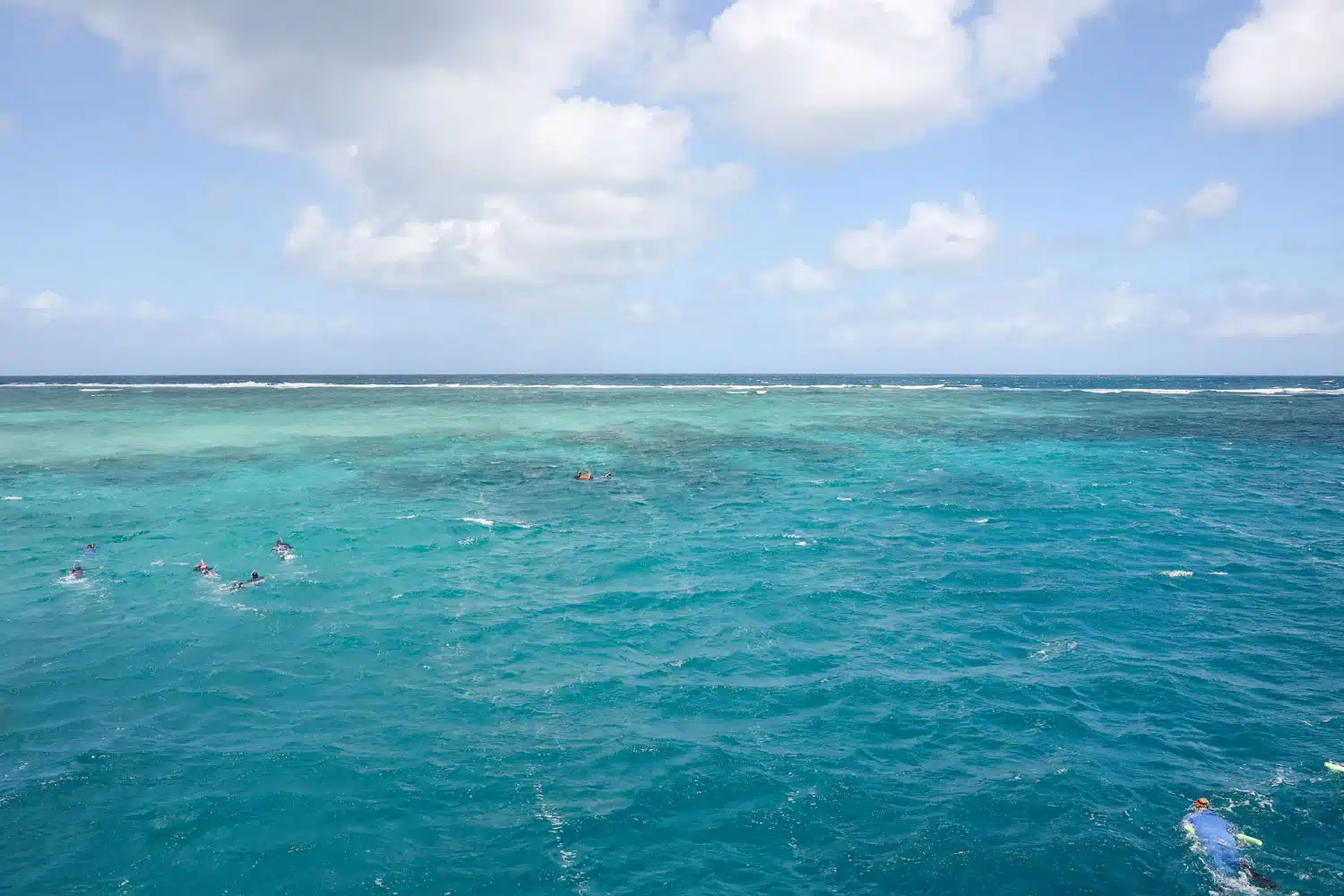
At the Great Barrier Reef
With Reef Encounter, people were transferring on and off the boat each day. Upon arrival, a few groups finishing their stay boarded the transfer boat back to Cairns, while others lounged around in the main cabin or were out in the water. Everything had a very relaxed vibe that set the mood for our trip.
Apart from set dive times, everyone was free to go off and do their own thing. This relaxed pace was the perfect break from our usual travel that ultimately enhanced our multi-day scuba experience.
Scuba Diving in the Great Barrier Reef
The onboard staff gave us a brief introduction related to our trip as well as a rundown of the dive site we were located. Before donning our gear and heading into the reef, we were also given a brief reminder course on how to use our scuba gear.
My mates and I were Open Water Scuba certified, meaning we could dive to a max depth of 20 meters. Since we all had experience diving before, we were given a brief 5-minute crash course on how to use our gear. We also had the flexibility to dive without a guide, and since we had an even number, could easily buddy-up into pairs.
We zipped up our wetsuits, strapped on our gear and completed key safety checks. Before we knew it, we were floating only a few meters above reef! I have had a lifelong desire to learn to scuba dive, and once I was finally diving here at the reef, I couldn’t contain my excitement.
Words alone simply can’t describe the beauty of the GBR, so I’ll let the photos do most of the talking. Giant towers of coral dominated the vast ocean landscape. Schools of fish weaved in and out of these colorful neighborhoods. The diversity in shape, size, and color of these underwater structures were baffling. It seemed like no two pieces of coral were alike, everywhere we looked we could find something unique.
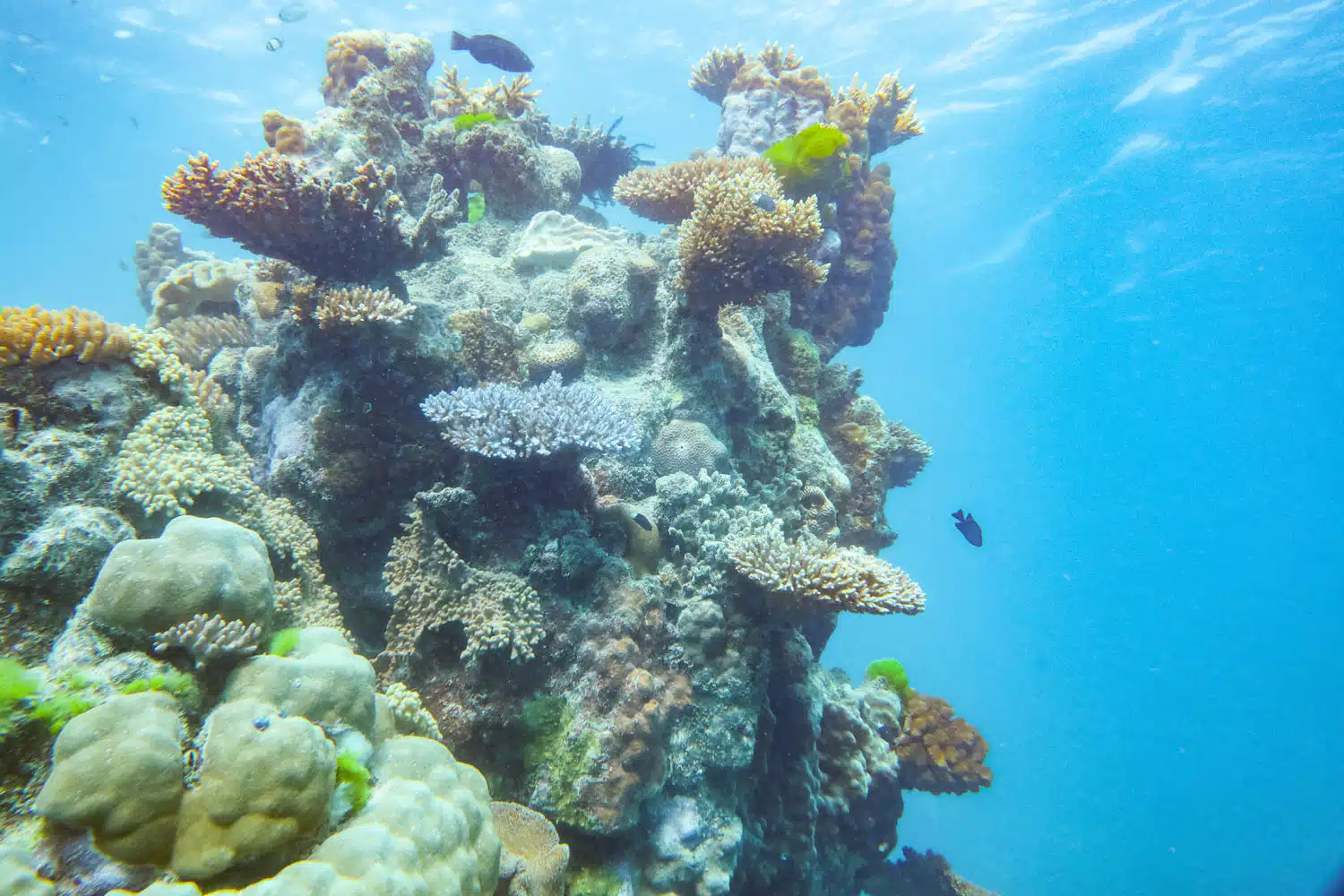
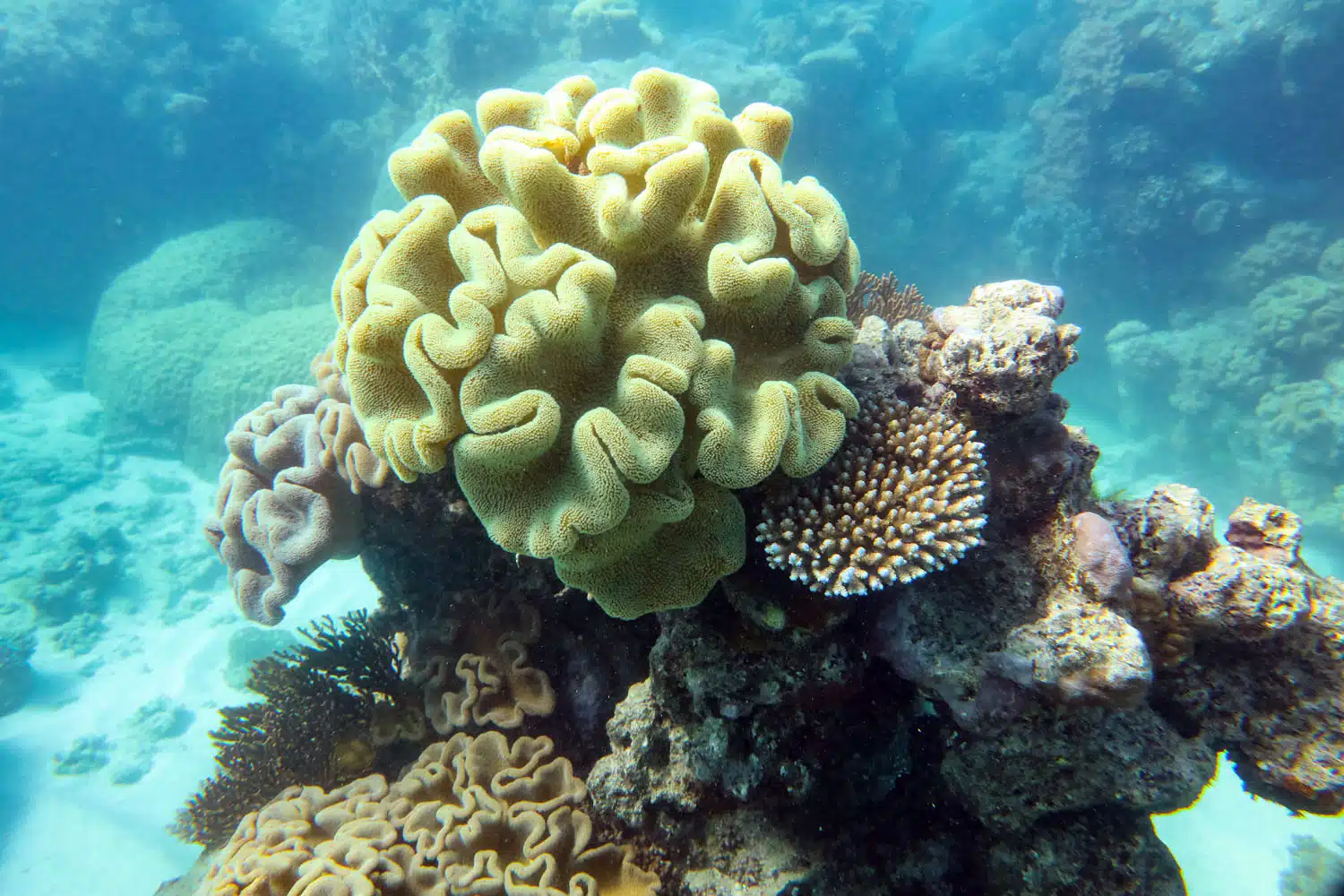
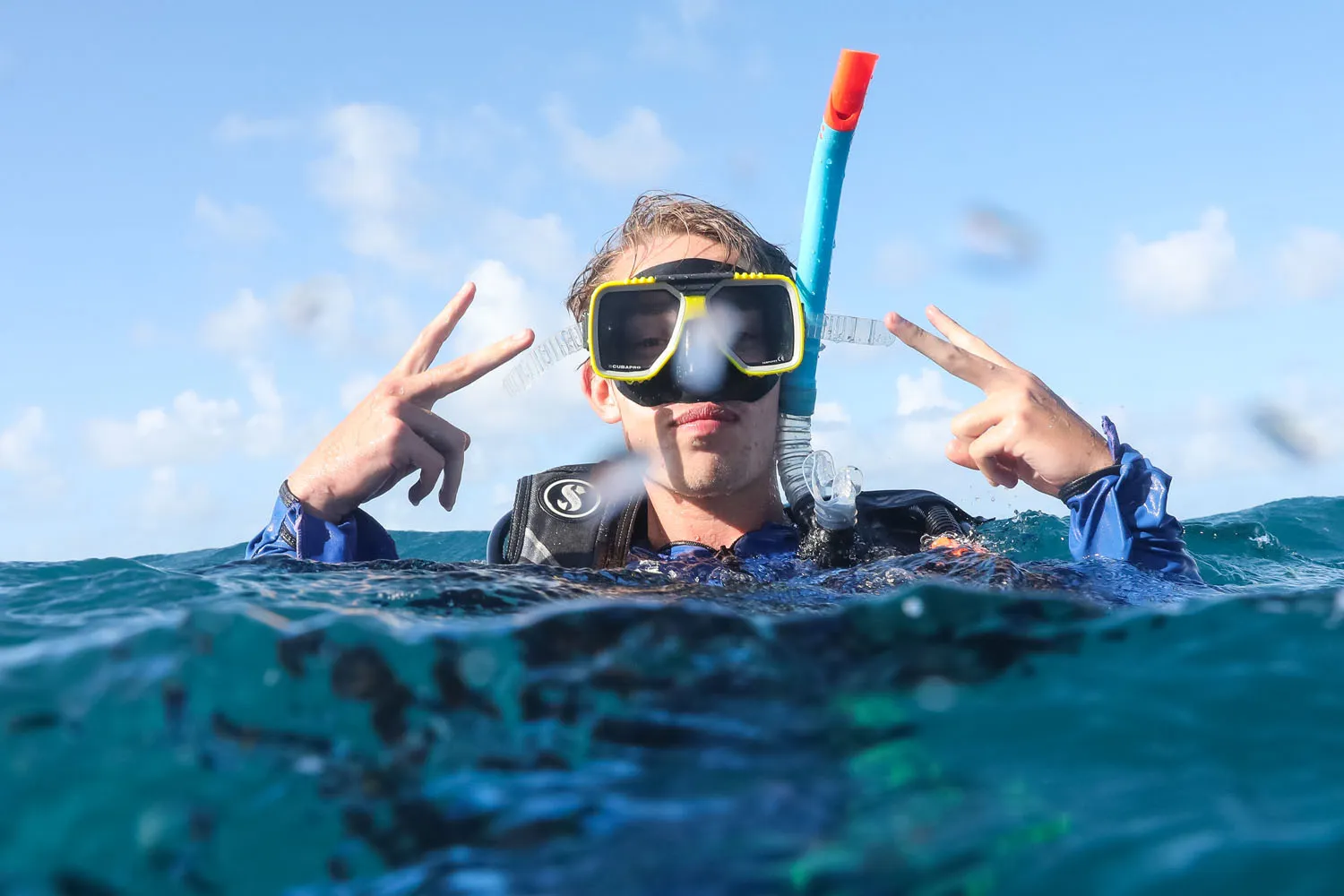
Our 6 dives took us between depths of 10-20 meters (32-65 ft). Although there was a certain “cool factor” that came with diving at deeper levels, we found that, at the 3 reefs we visited, the most exciting collections of life were present at roughly 8-12 meters. For snorkelers, this is a depth that is unattainable to reach (unless you feel you’re proficient in free diving), which is one primary reason why I recommend scuba instead.
A full tank gives you about 30-40 minutes underwater, meaning you’ll explore a greater variety of wonders. With 6 dives under our belts by the end of our trip, we totaled a little under 3 and a half hours below the surface!
Over 6 dives and 3 different reefs, we checked off every major attraction on our list. Crazy, expansive structures of coral? Check. Giant clams larger than a person? Check. Swimming with all kinds of vibrant sea life, including sharks? Mega check!
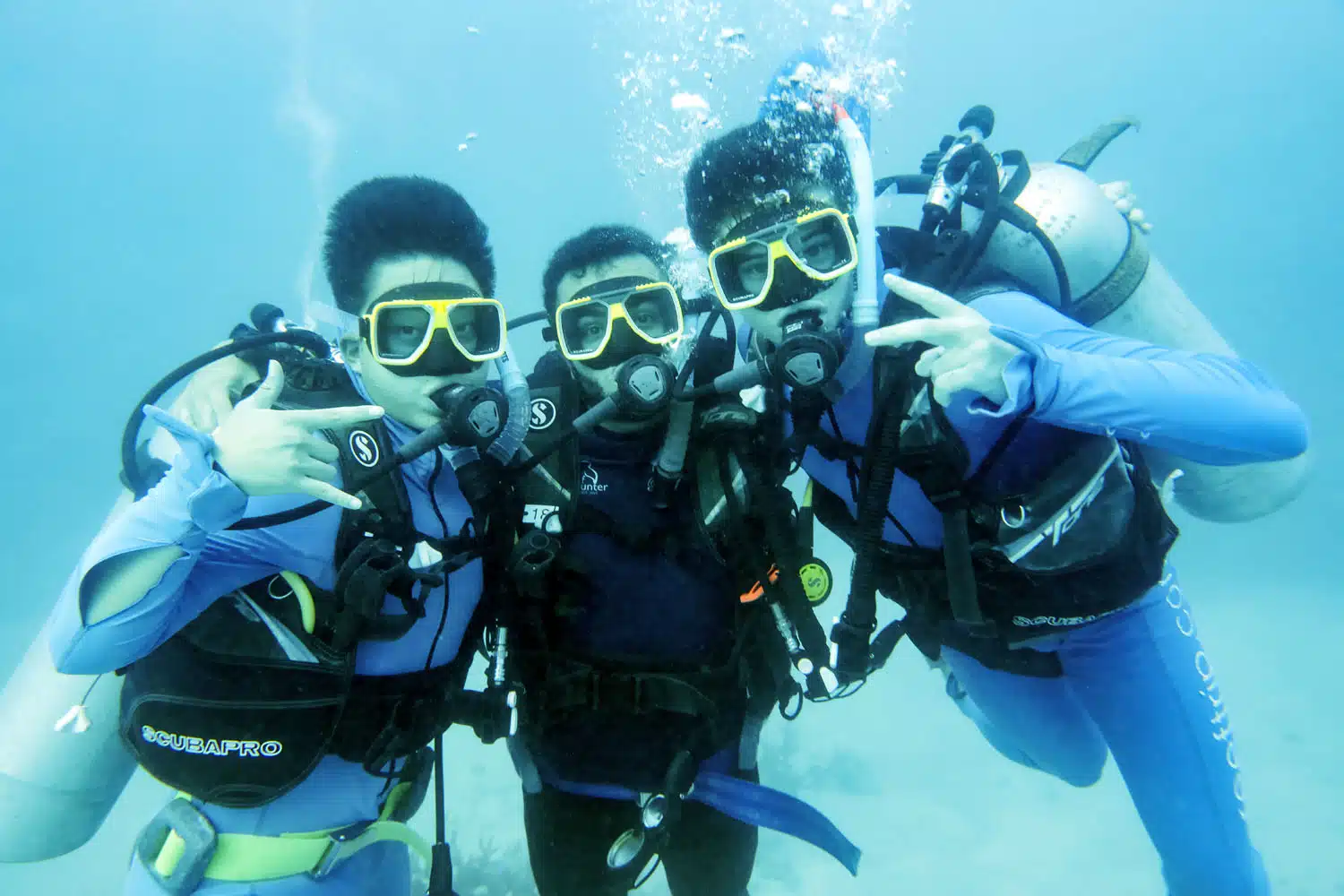
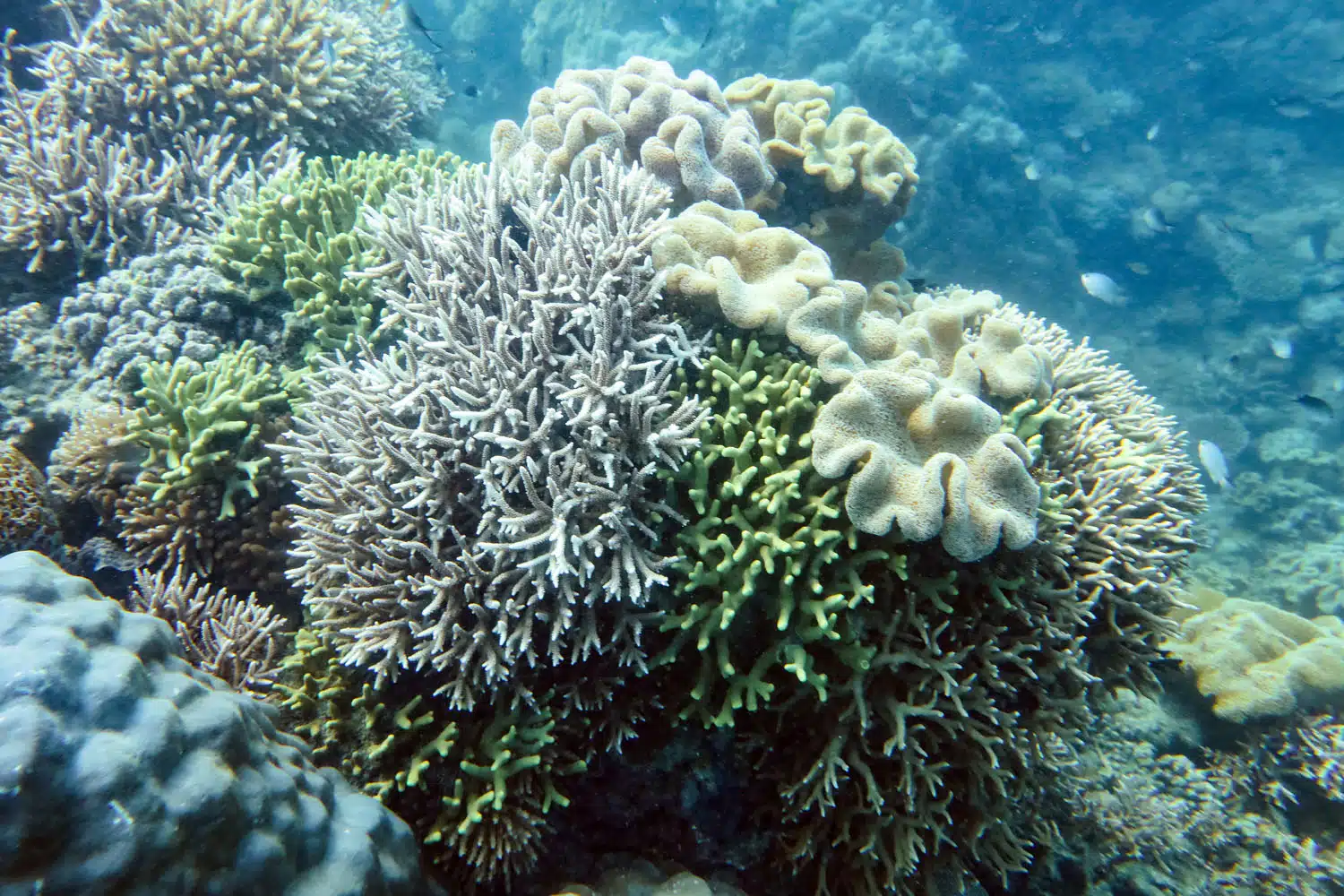
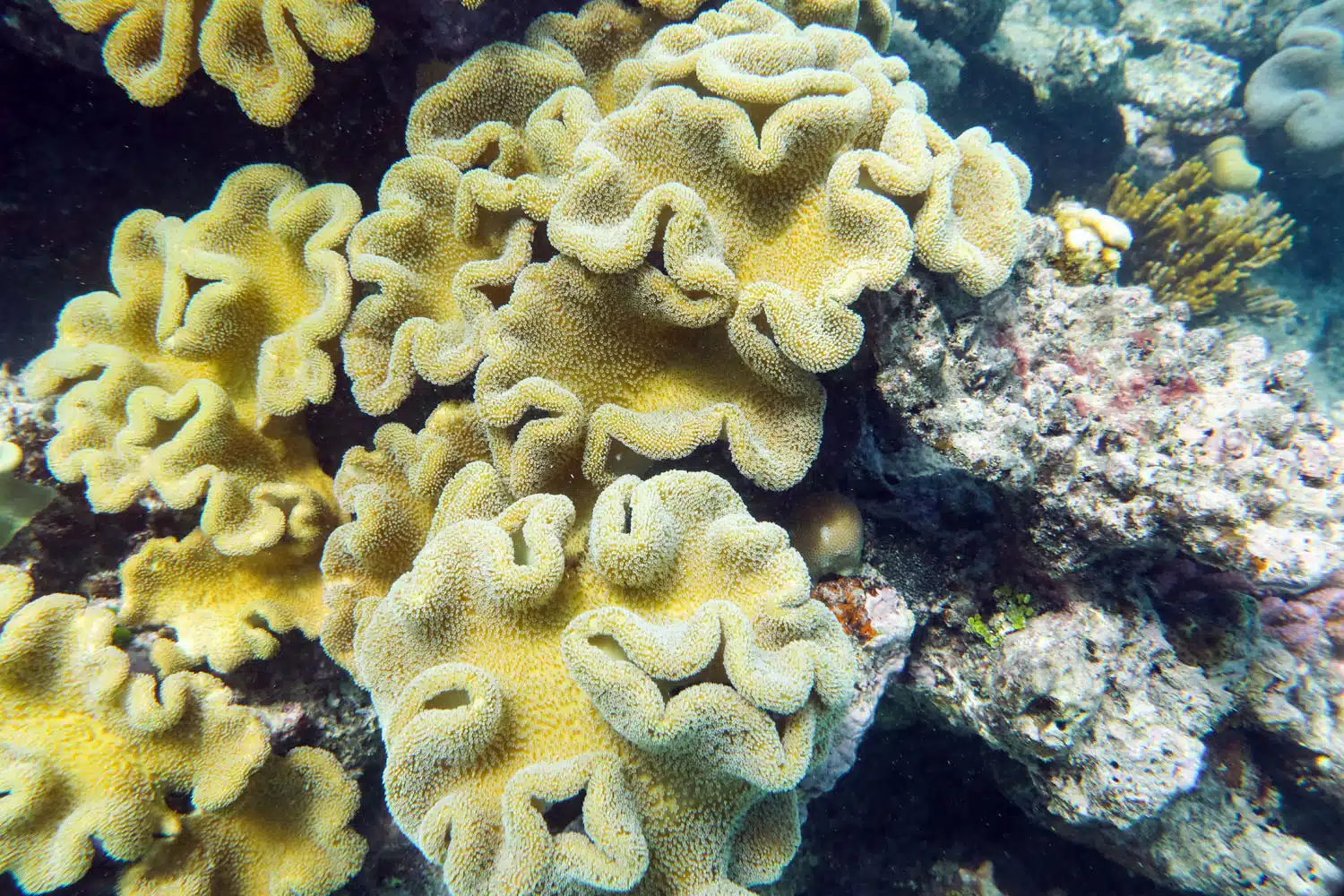
Night Diving
Our one night dive was perhaps the craziest of all our dives.
As we stood at the back of the boat, gearing up in our cold wetsuits that still hadn’t dried from the previous 2 dives that day, we looked out into the water to witness a spectacle. Illuminated in the floodlights of the boat were maybe 40 reef sharks thrashing around at the surface of the water. Not only could you see them clear as day, but you could hear their violent thrashing as they fed on smaller sea life.
I looked at one of my mates in shock, and we both were thinking the same thing: “we’re gonna go dive in that!?”
Luckily the reef sharks we swam with are not interested in humans, so thankfully our scuba trip was not ended preemptively by us turning into shark bait. Our group of 4 dropped down below the surface, this time led by a guide, as we submerged ourselves into the darkness below. Visibility was at an all-time low, so we each were equipped with a flashlight to help guide our way.
Although the sharks that swam at the surface seemingly disappeared once groups began getting into the water, we did encounter a staggering amount of them once below the surface.
What was even more thrilling was that, given the low visibility, a shark would appear almost out of nowhere, right in front of you, before calmly swimming past. It was both one of the freakiest and coolest things I’ve ever been lucky enough to experience. With our fantastic guide I felt safe the entire time and can easily say that out of all the dives of this excursion, the night dive was the most memorable.
Downtime on a Liveaboard Tour
In the break between dives, my group and I found ourselves soaking up the sun on the upper deck, playing cards with other travelers in the main cabin, and enjoying some absolutely delicious meals prepared by the staff.
When it came time to rest, we retired to our small but surprisingly comfortable cabins as the waves gently rocked us to sleep.
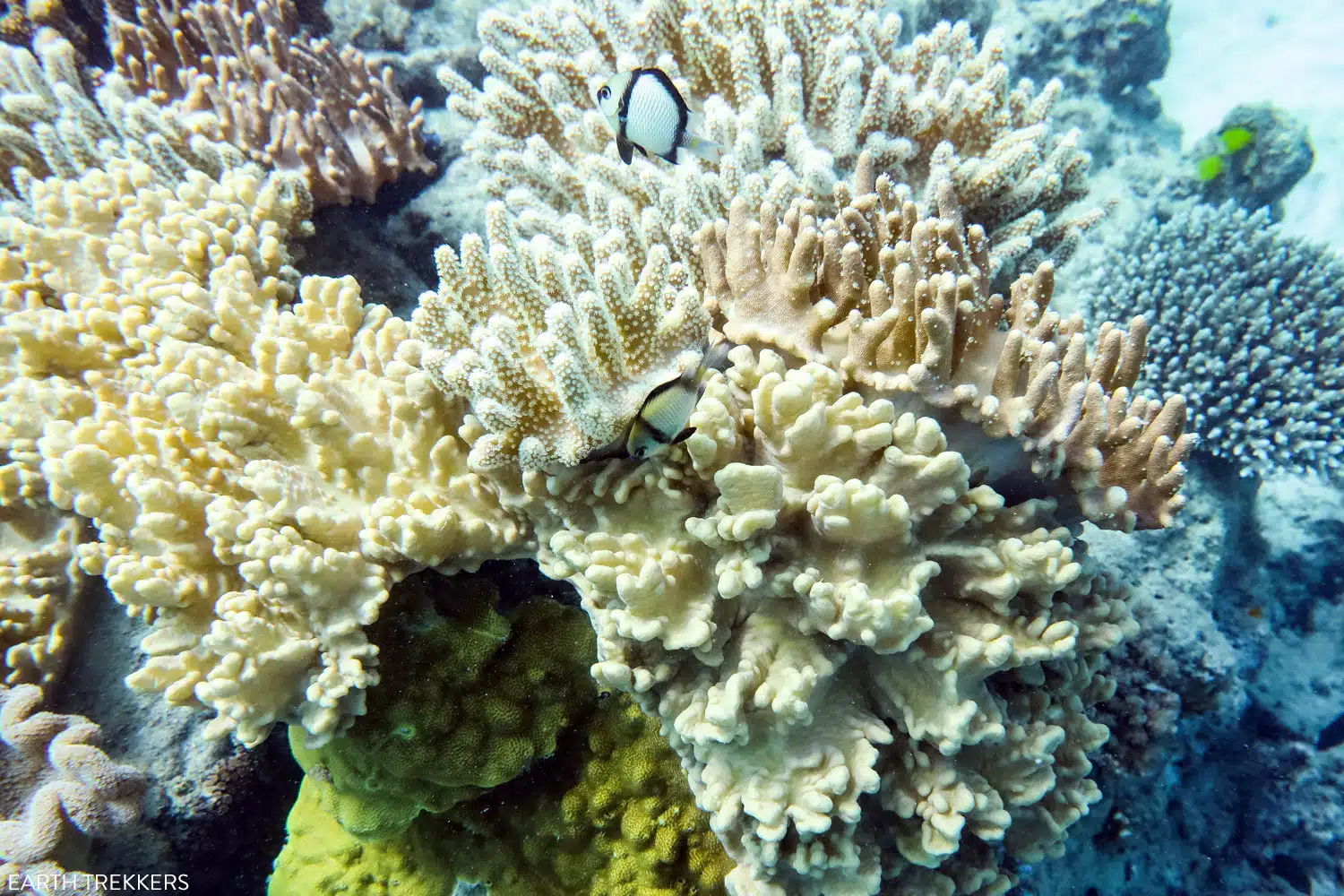
Scuba or Snorkel – What’s Best?
I can definitively say that, whether that be for a short snorkel day trip or a multi-day scuba adventure, a visit out to the Great Barrier Reef is a must-do.
After having done both the snorkel and scuba trip, I strongly recommend the latter. Even if you aren’t certified, there are several tour options (such as Reef Encounter, who we booked with) that will provide you with the basic knowledge and a phenomenal guide to make your experience enjoyable and also safe. Scuba diving also opens up a wider range of possibilities on how to see the reef, such as several popular shipwrecks that you can’t access with a snorkel.
If you aren’t comfortable with scuba diving, I do still strongly recommend snorkeling at the reef instead. Many of the same dive sites we visited are also great for snorkeling as there are portions of the reef that sit at pretty shallow depths (2-3 meters).
Off the same boat we dove from, other travelers opted to snorkel at the reef instead of scuba diving, and from what we heard they still had a life-changing experience. You can find day trips and even multi-day trips designed for snorkeling at the reef, and I guarantee you won’t be disappointed with what you find.
If planning on taking a scuba trip out to the GBR, I also recommend booking a liveaboard tour. This is a multi-day scuba trip (anywhere from 1 night to 7+) centered on seeing highlights of the reef while providing you with plenty of time to relax and enjoy the area. You’ll meet other like-minded travelers along the way who all come together to enjoy the culture of the boat. When we made it back to town after our trip, the only thing I wanted was more time out at the reef!
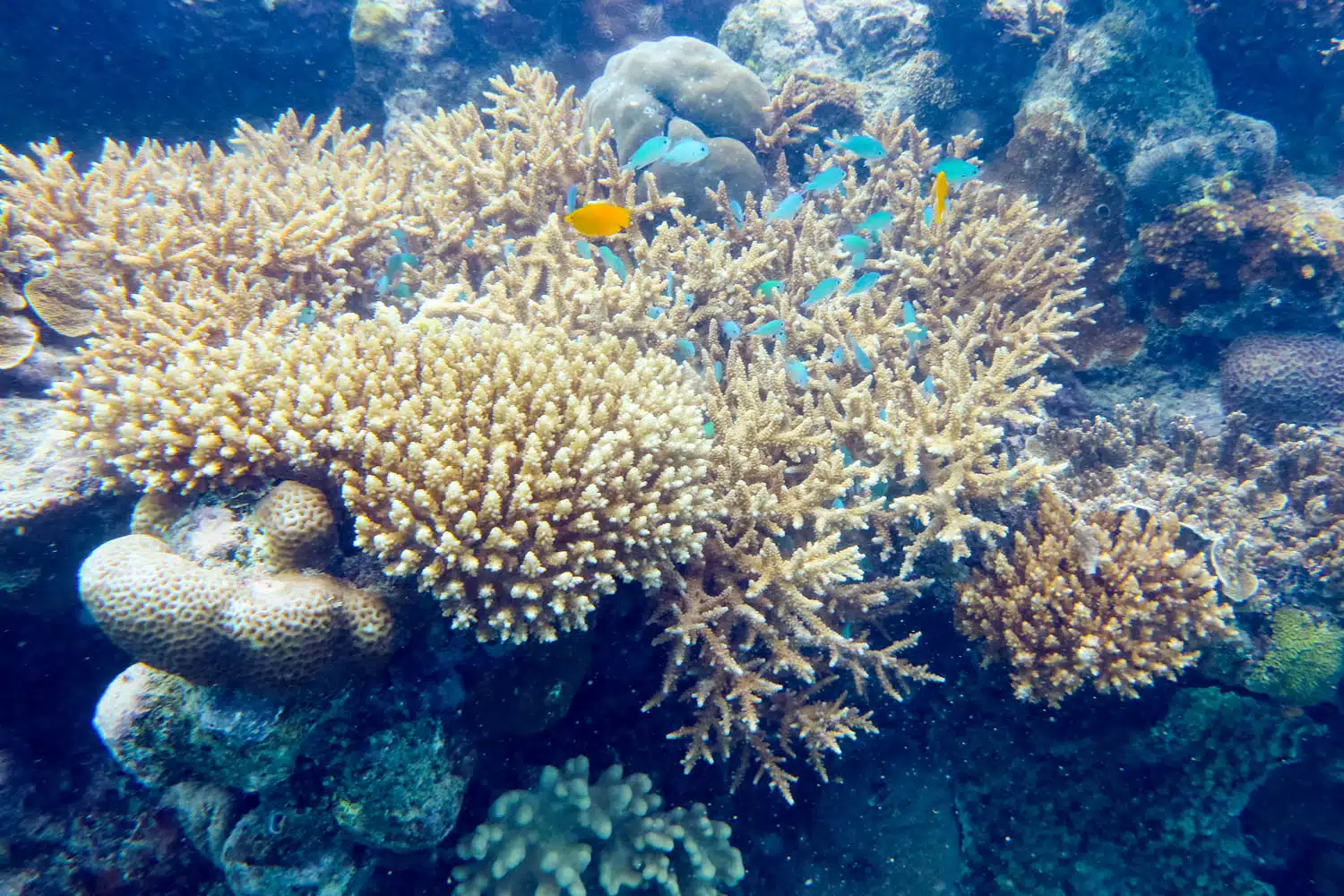
Tours of the Great Barrier Reef
Here are a few more ways to experience the Great Barrier Reef, from one day scuba diving trips to scenic flights over the GBR.
If you have any questions about liveaboard tours of the Great Barrier Reef or if you want to share your experience, let us know in the comment section below.
More Information for Your Trip to Australia
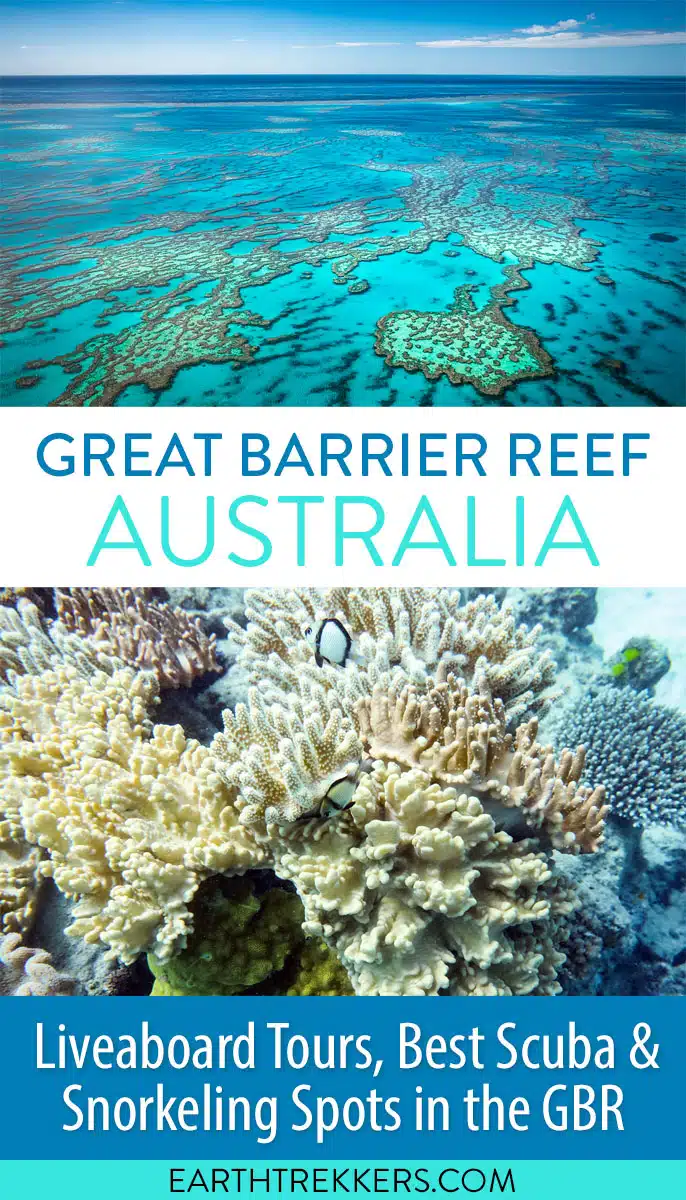
Header image photo credit: Vlad61/shutterstock.com
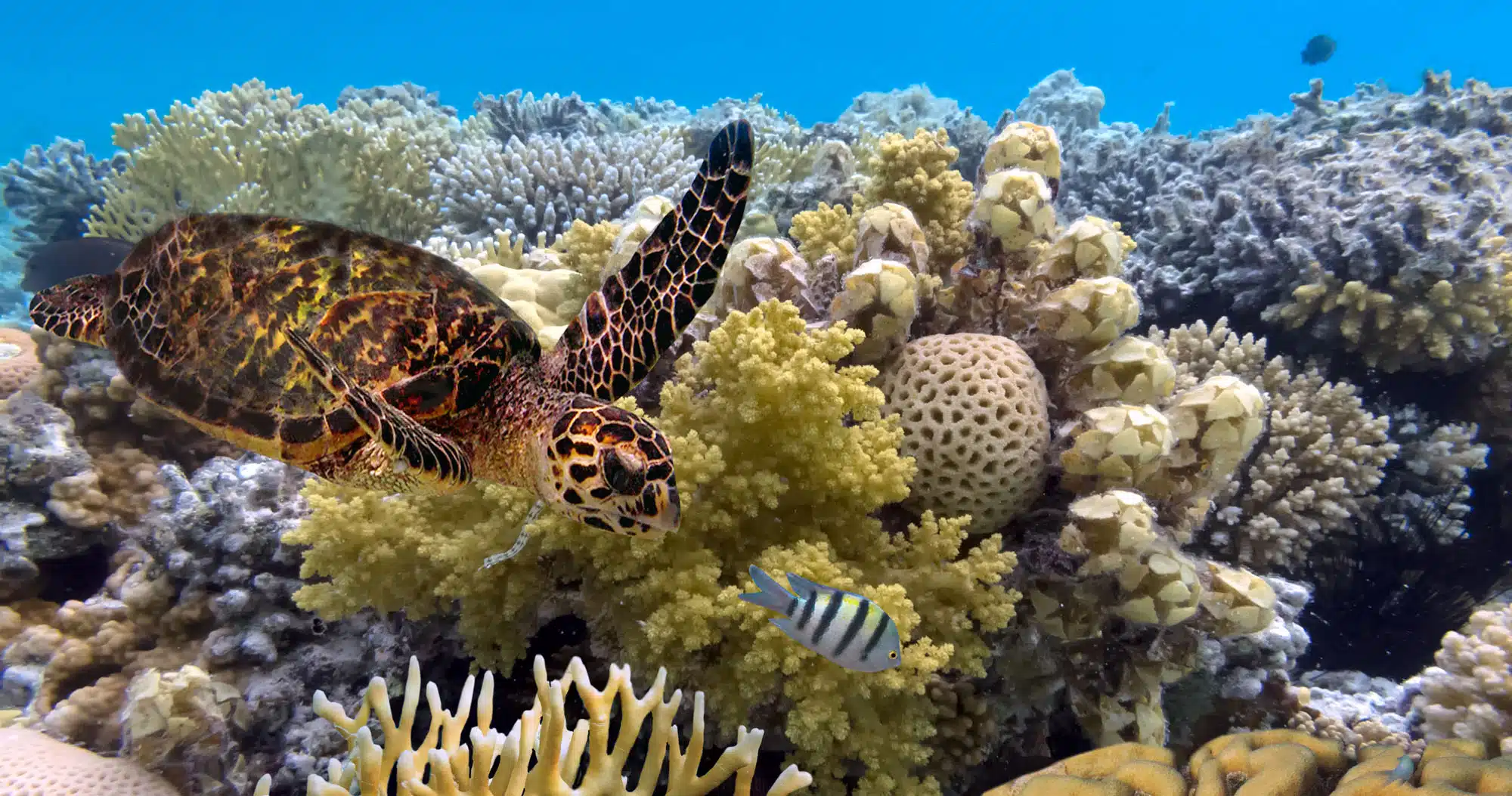
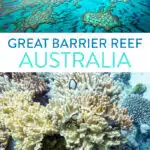
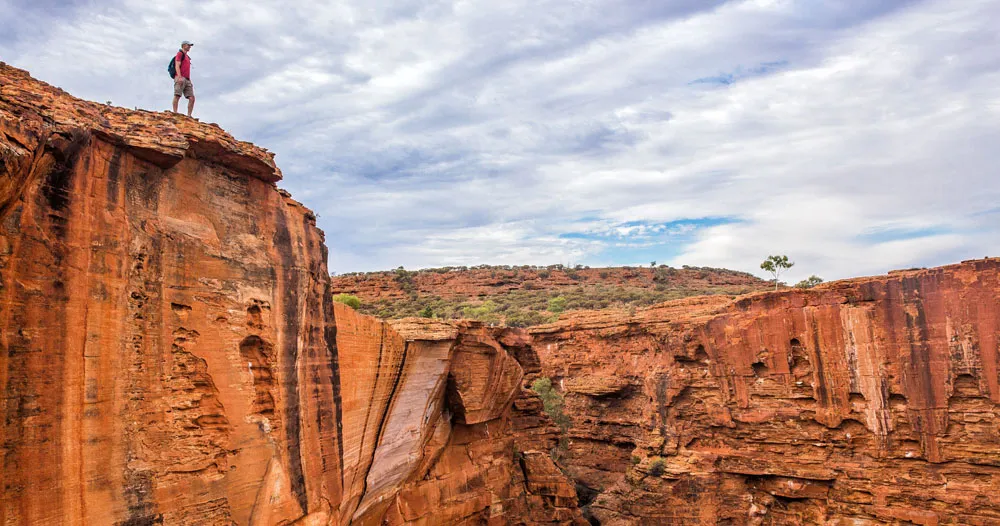
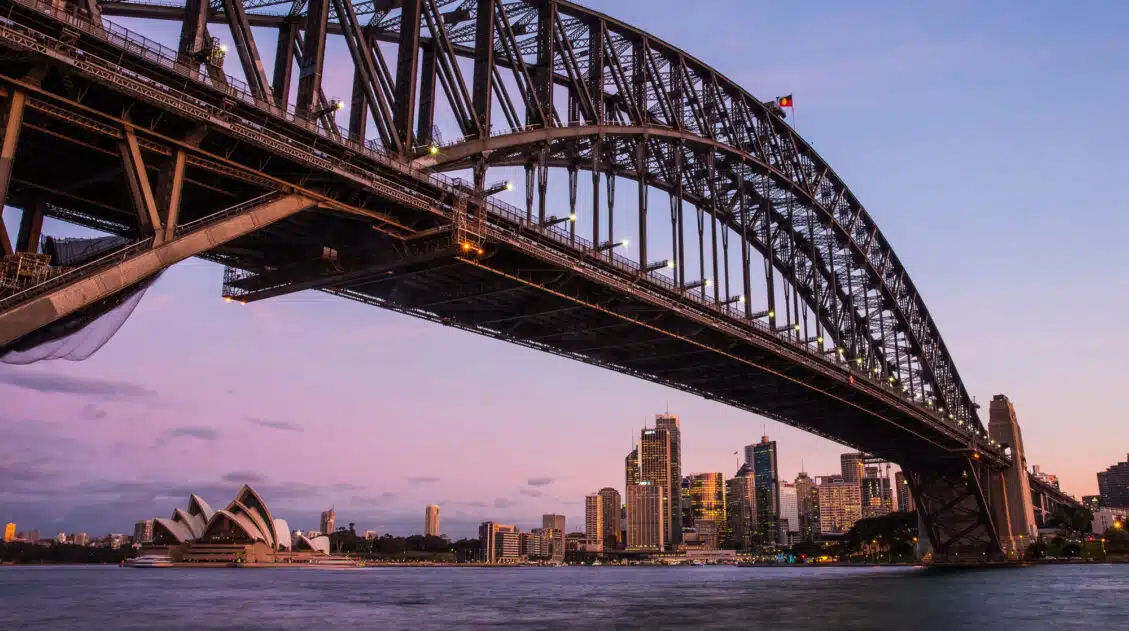
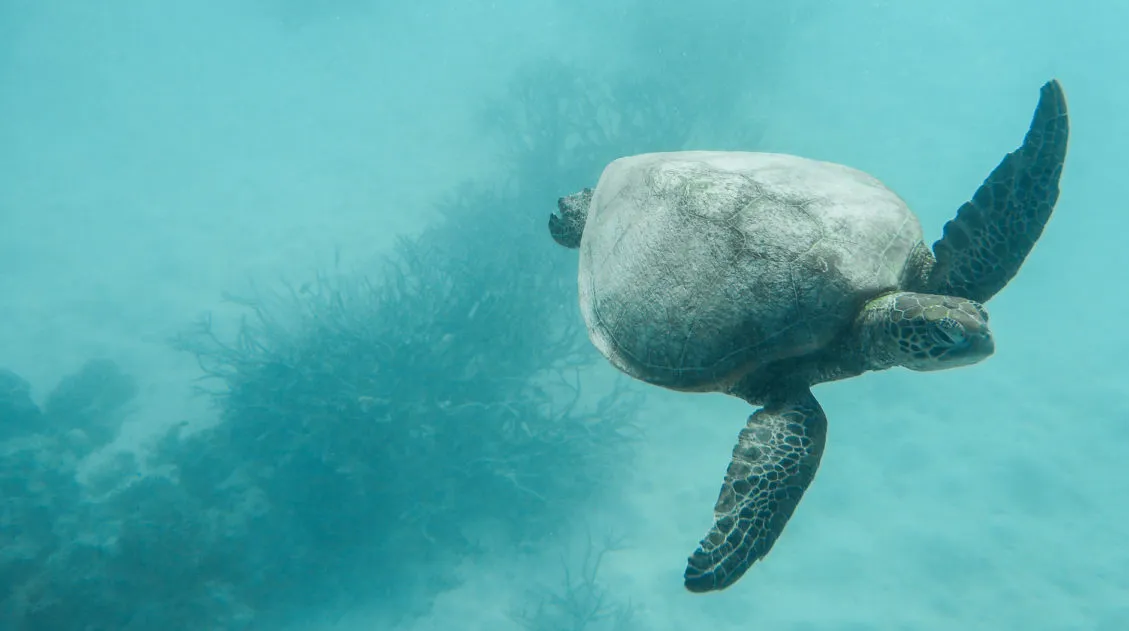
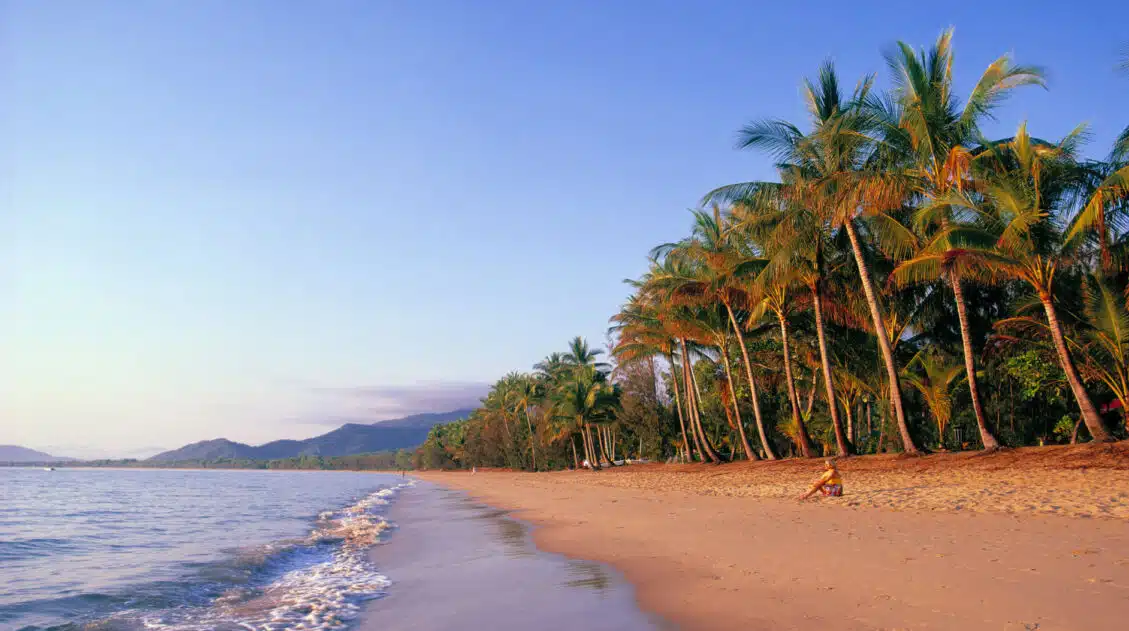
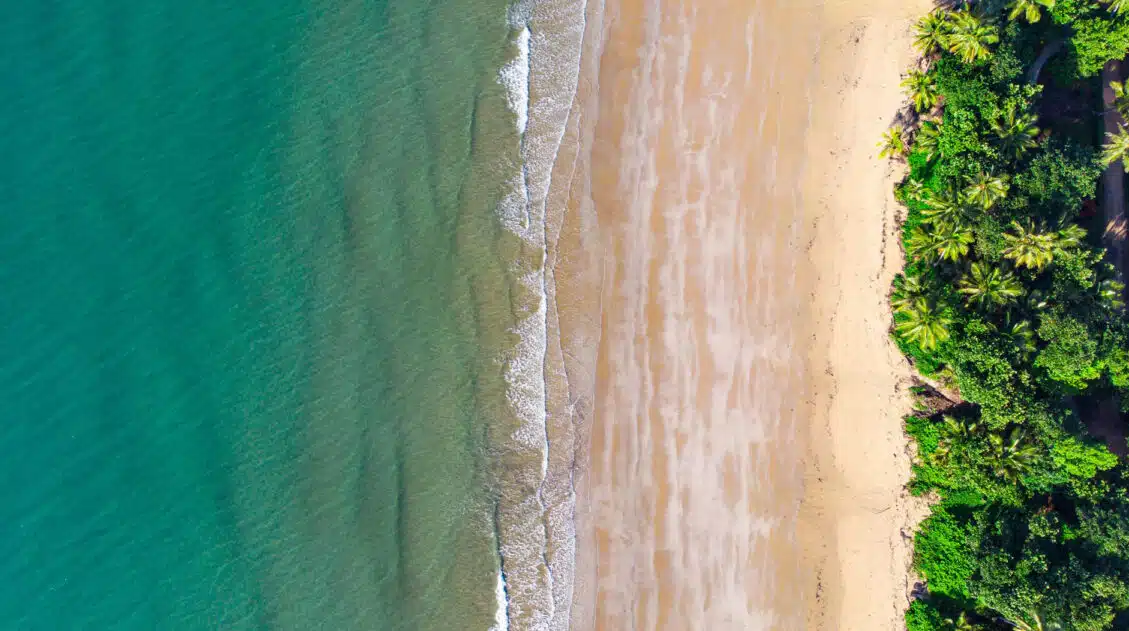
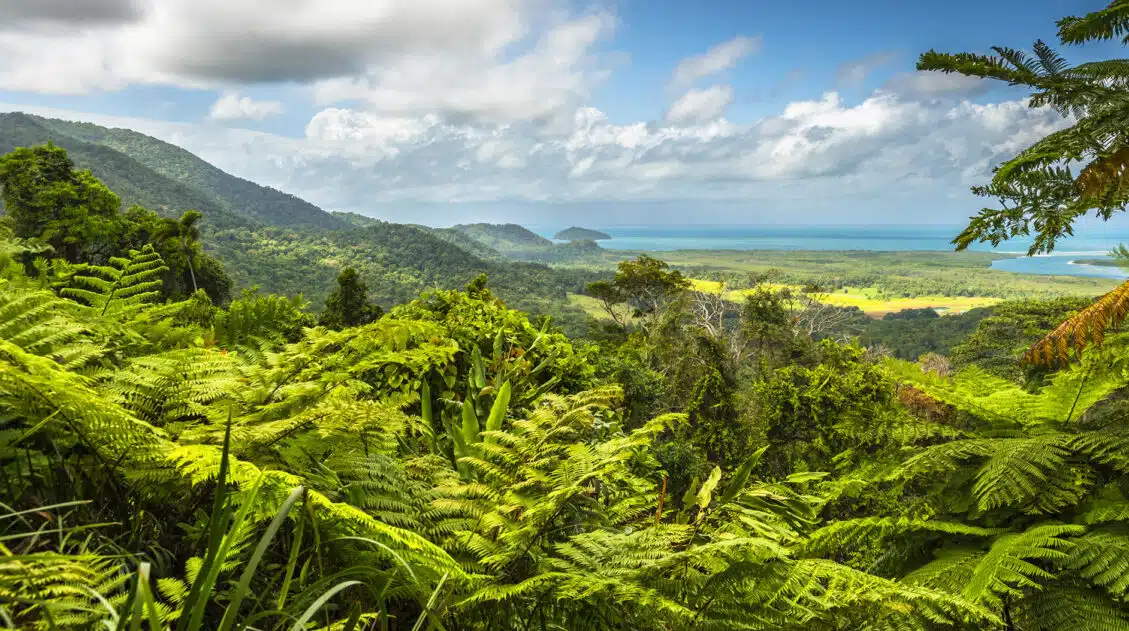
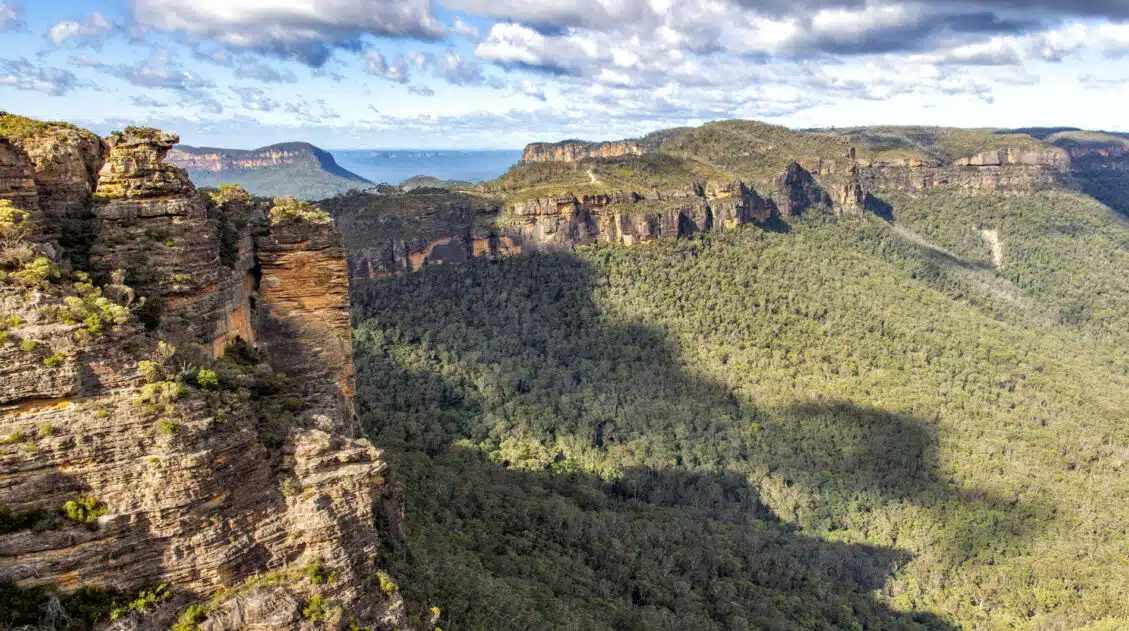
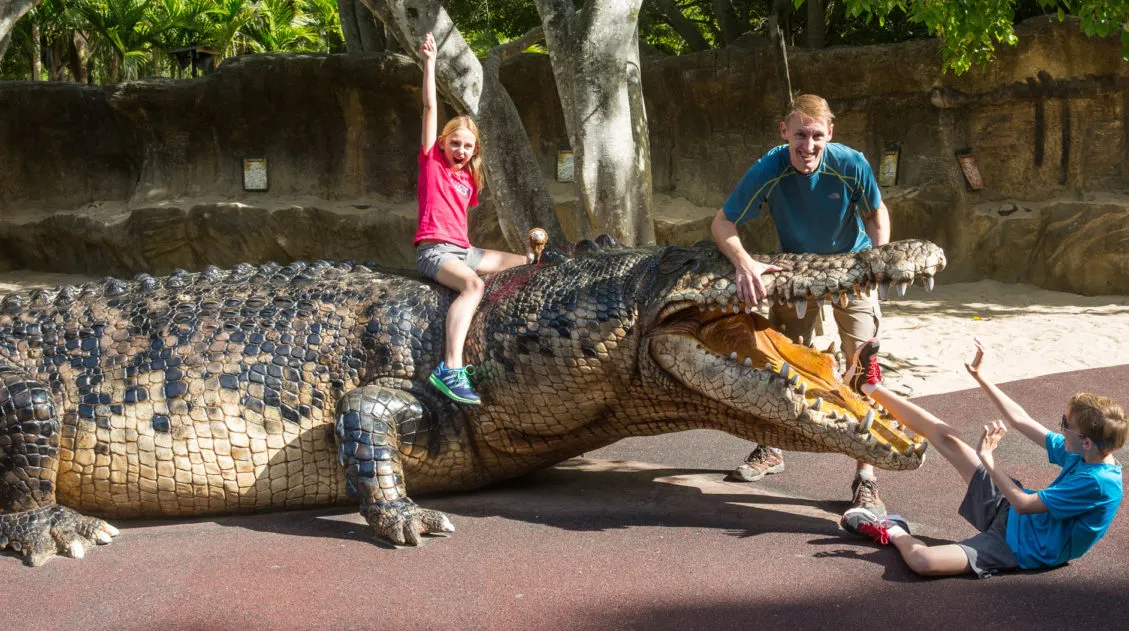
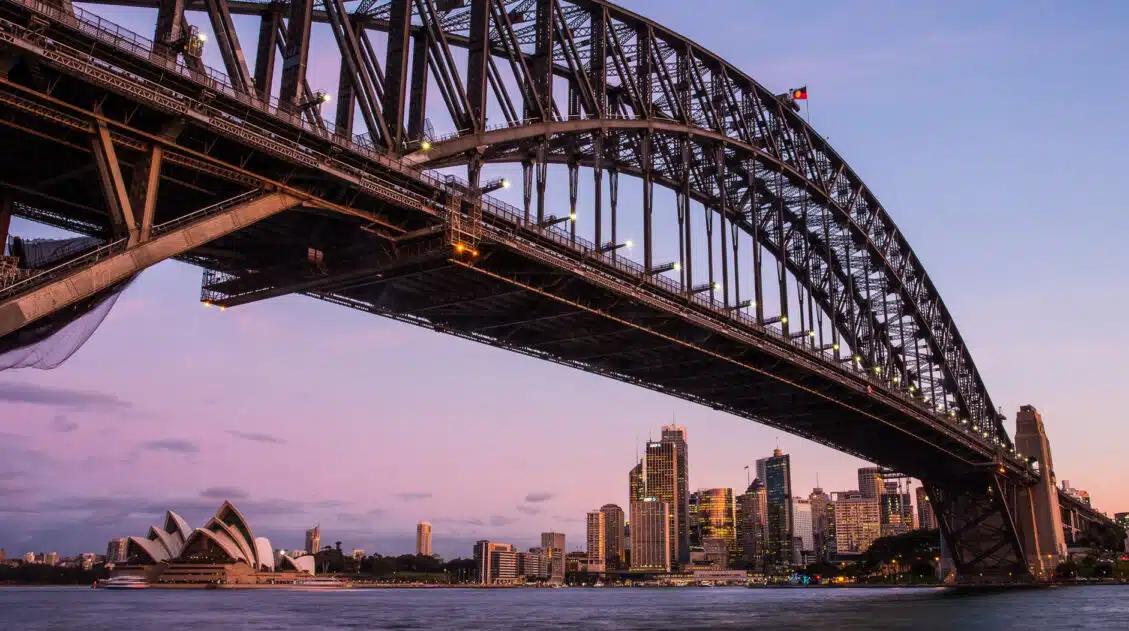
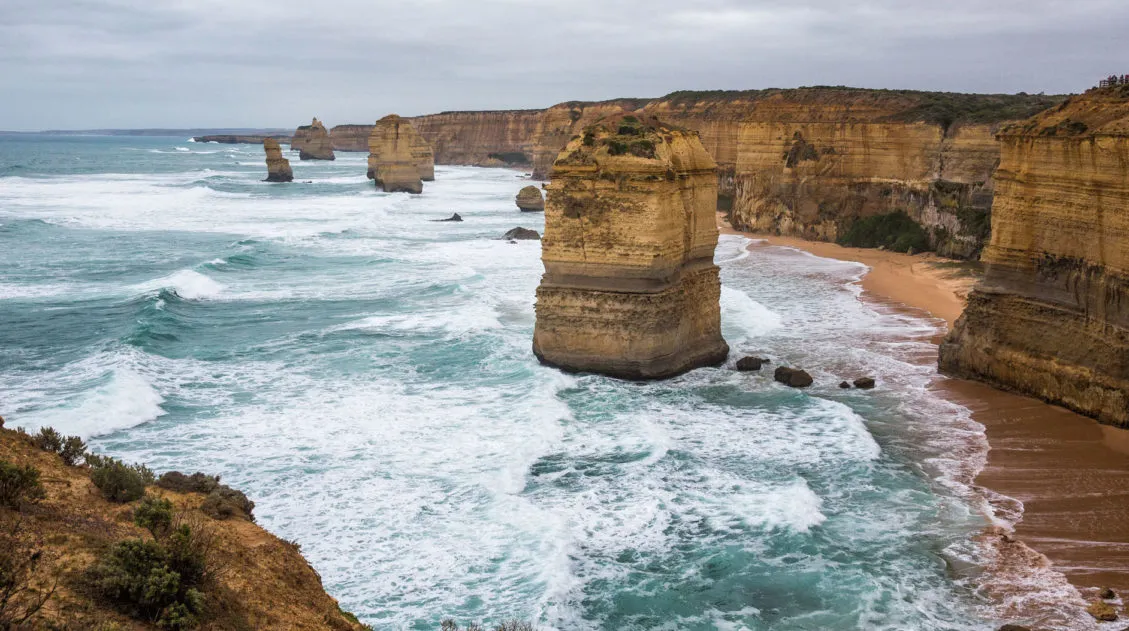
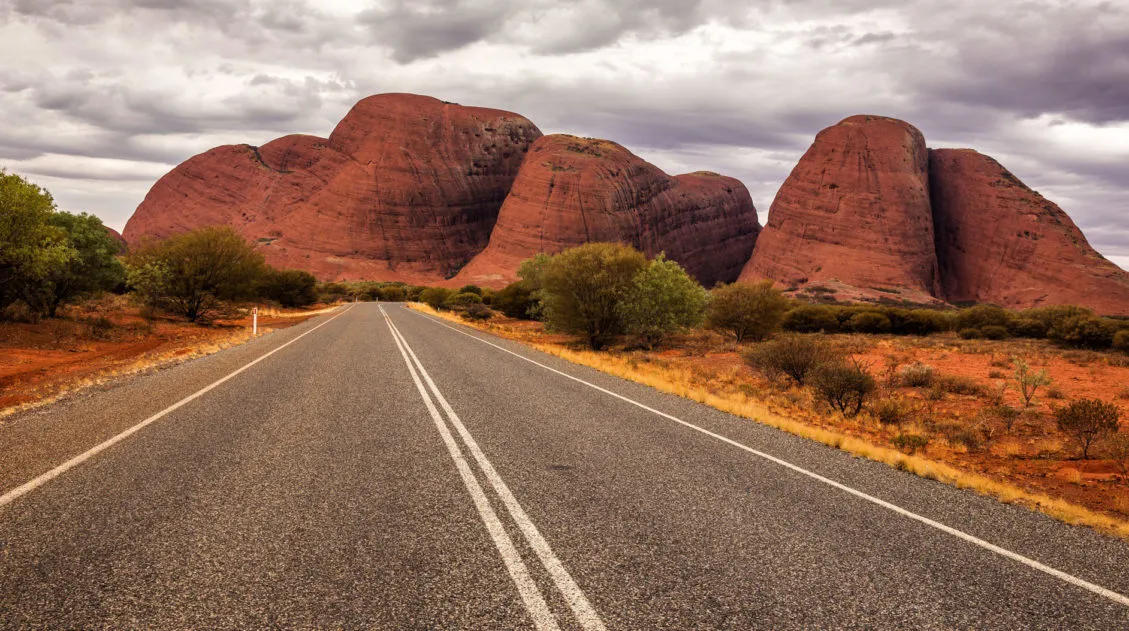
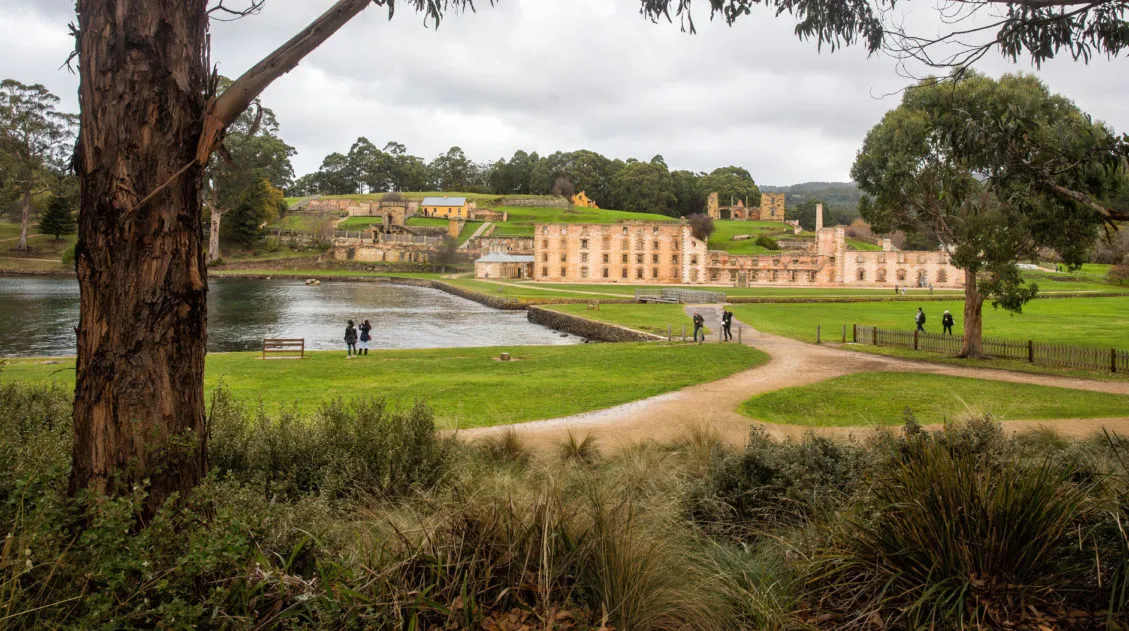
Comments 4